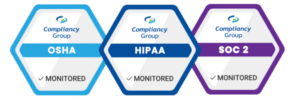The Office of the Inspector General (OIG) has honed in on chiropractic practices over the last few years because of improper payments and claims, and noncompliance with Medicare requirements. There seems to be a gap between chiropractic services and positive compliance outcomes. This is why an OIG compliance manual for chiropractors is essential. These programs cut down on noncompliance with standards for care and prevent discrepancies with submitted billing codes.
While there are various contributing factors to why chiropractics need to pay more attention to compliance, the primary purpose of having these programs in place is to protect the practice’s reputation and enhance patient safety.
What is the Focus of an OIG Audit for Chiropractors?
The purpose of an OIG audit is to prevent fraud and abuse or to detect it. These evaluations assess the effectiveness of departmental programs. Overall internal controls, quality of care, and data security tactics are assessed as well.
For chiropractors, you could expect several key areas to be focused on, such as:
- Documentation Accuracy
- Billing and Coding Practices
- Claim Submission Accuracy and Appropriateness
From timely submission of claims and accurate reporting of patient information, the OIG’s purpose is to better your practice. However, the audit process can be rigorous depending on how it was triggered.
Why Chiropractors Without an OIG Compliance Program Often Struggle
Practicing chiropractors need an effective OIG compliance program to reduce exposure to liabilities and risks to their practice. Fraud and abuse reduction is only the start of the benefits that derive from having the right compliance program in place. While these programs are often seen as voluntary, in many cases, having one implemented is a requirement. This is especially true if you accept Medicare Managed Care, which requires compliance with Medicare documentation.
The Patient Protection and Affordable Care Act also implemented additional compliance guidelines that require practices to have a compliance program in place to help different practices enhance their operational environment. Doing so will help chiropractors gain more credibility and become more trustworthy from the viewpoints of insurance agencies, patients, and peer groups.
Determining the Effectiveness of Your Compliance Program
Over the past decade, there have been multiple observations within chiropractics that have drawn the attention of the OIG. In 2016, hundreds of millions of dollars were reported in Medicare payments directly related to chiropractic services that didn’t comply with the requirements of Medicare. And in 2021, there were about 163,000 chiropractic claims that included at least one code for treatment that was submitted incorrectly and resulted in improper payments considering the standards of care in place.
To prevent falling within the OIG’s radar, you should consider the effectiveness of your current compliance program by following the steps below.
Regular Audits and Assessments
Chiropractic offices should conduct routine internal audits to identify potential issues before they escalate. Keep in mind there are multiple things that could trigger an OIG audit, such as reports to the waste and abuse hotline.
Prioritizing Staff Training and Continued Education
With chiropractors, you should regularly train your staff on compliance regulations and stay up to date with regulatory changes. The easiest way to do this is to use training software.
Maintaining Clear Policies and Procedures
Develop and maintain clear, written policies and procedures that outline compliance expectations and protocols across your practice. Consider that noncompliance penalties can range from $10,000 to $50,000, and having clear policies in place is one way to avoid these penalties.
Appointing a Compliance Officer
It can be helpful to have a dedicated compliance officer within your practice. However, for smaller practices, this isn’t often practical, especially if you have budgetary constraints that would prevent you from bringing someone on. Instead, opt for compliance software that simplifies compliance tracking, monitoring, and upkeep.
Features That Streamline Regulatory Updates and Compliance in Your Practice
An OIG compliance manual for chiropractors is an invaluable resource for navigating how to prepare for audits and how to prevent avoidable audit triggers. The simplest way to adopt compliance best practices is to use a system to visualize and manage every step of your compliance program. By centralizing the features you need for your program to be effective, you can limit the challenges your practice faces and improve your chances of continuously delivering high-quality care.







